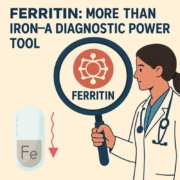Treating Peripheral Neuropathy
The peripheral nervous system includes the nerves that lead from the brain and spinal cord throughout the body. There are several different types of peripheral nerves including motor nerves, which carry messages that make our muscles work; sensory nerves, which carry sensations from our skin, muscles, and organs including touch, temperature, vibration, and pain; and nerves that control autonomic function (involuntary) such as heart rate, breathing, blood pressure, and digestion. Peripheral neuropathy is a term used to describe damage to these peripheral nerves.
Symptoms of peripheral neuropathy depend on what types of peripheral nerves have been damaged but typically can include numbness, tingling, pain, and weakness, as well as digestive difficulties and bladder dysfunction. The peripheral nerves most commonly damaged are those that deal with sensation, therefore the most common symptom of people suffering from peripheral neuropathy is pain, which can unfortunately be quite severe.
Damage to the peripheral nerves can be caused by many conditions, including:
- Infections such as shingles, Lyme disease, and HIV. Research is also suggesting that COVID-19 increases the risk of developing neuropathy both during and after the infection.
- Autoimmune diseases such as Celiac disease, pernicious anemia
- Alcohol abuse
- Side effects from medications (chemotherapy, for example)
- Metabolic disorders such as diabetes, hypothyroidism, and nutritional /vitamin deficiencies
- Trauma
- Hereditary disorders such as Charcot-Marie-Tooth (CMT) disease.
Treating Peripheral Neuropathy
Treatment is first and foremost aimed at addressing the underlying cause and finding the appropriate solution to resolve and/or manage it. Unfortunately, in approximately 30% of the cases, an underlying cause cannot be identified, and this is called idiopathic peripheral neuropathy.
The next goal of treatment is to alleviate pain and preserve function. In our Center, we typically start with acupuncture and herbal supplements that stimulate the body’s natural healing process. Both of these therapies have been very effective for a large number of our patients over the years. Physical therapy can also be helpful. Topical medications such as lidocaine patches or creams that we have compounded specially for our patients are our next line of therapy.
Next, we consider the use of antidepressant medications such as amitriptyline or nortriptyline, or anticonvulsant medications such as gabapentin or Lyrica, as both types of medications can be helpful in moderating pain by altering neurotransmission in the peripheral nervous system. All of these medications have potential side effects, and unfortunately, none of the therapies are 100% effective.
For those who are diabetic, management of blood sugar is crucial to control the progression of the neuropathy. There are several supplements such as magnesium and chromium picolinate that might be helpful as people who have diabetes are typically low in both. Also, there is a significantly higher risk of celiac disease and thyroid disease in people who have Type-1 diabetes. If you have not already been evaluated for these diseases, you need to be tested. A simple blood test can be done for both conditions.
Peripheral neuropathy can also put you at higher risk of injury from a fall and other types of accidents. Ask a family member or friend to help you organize your home in a way that minimizes clutter and keeps walking areas open.
Peripheral neuropathy can improve with time if the underlying condition is addressed, but unfortunately in some cases, the damage may become permanent. If you’re suffering from nerve pain don’t delay talking to your provider about your symptoms. A healthy lifestyle combined with a holistic treatment approach can improve the physical and emotional effects of peripheral neuropathy and help you re-engage in life.
We are here for you, and we want to help.
Our goal is to return you to optimal health as soon as possible. To schedule an appointment please call: 703-532-4892 x2
This article was originally published in May 2015. It was reviewed and updated in September 2023.









Leave a Reply
Want to join the discussion?Feel free to contribute!